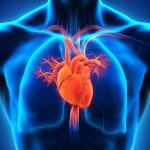Trauma Training Tip
Understanding the nature and function of the Fire Element in the self-protective response is central to working with trauma survivors.
When we experience danger or life threat, the vibration of fear in our Kidney reaches across the control cycle to our Heart Protector. As humans, our first instinct, unless it has been previously extinguished, is a relational one. Our Heart Protector is the vehicle that helps us be in relationship with and seek help from the people around us. We are social animals, and in health, our ability to engage with our “tribe” can make a world of difference in how we experience the impact of threat.
If our Heart Protector is able to resolve the conflict and mitigate our arousal using our capacity for connection and relationship with others, there will be no need for our Liver to mobilize a fight or flight response. Our Pericardium helps us raise a difference of opinion in the context of relationship.
 However, if our Heart Protector is unsuccessful, the Heart will be penetrated. It will send all the trucks in the firehouse to every corner of the kingdom to protect us. This places a very high metabolic demand on every system of our body.
However, if our Heart Protector is unsuccessful, the Heart will be penetrated. It will send all the trucks in the firehouse to every corner of the kingdom to protect us. This places a very high metabolic demand on every system of our body.
The Heart’s job also includes communicating coherence when we have successfully completed our response to this threat. Knowing in our “heart of hearts” that we have survived restores system-wide regulation, peace and equanimity in our body, mind, emotions and spirit.
Note that the signal for threat arises from the Kidney, but the command to respond arises from the Heart. These two organ systems function in close relationship in the self-protective response.
Building capacity in the Kidney to recognize safety as well as danger will result in more accurate messaging of threat to the Heart Protector and the Heart. Supporting the Heart Protector to resolve conflicts in the context of relationship will help our patients use their social engagement system rather than their mobilization system when responding to low level threat.
Alaine’s Two Cents
The impact of sexual trauma is coming to the light of day with the growing #MeToo movement. The wisdom of Acupuncture and Asian Medicine can help us understand this most intimate of traumatic stress experiences.
 Recall that our Heart Protector is also called our Circulation/Sex organ system. This refers to its role to help us navigate the complexities of the circulation of our sexual interest and its expression. Because of the Heart Protector’s close proximity to the Heart – we can all too easily over-couple the high arousal we experience in sexual intimacy with other experiences of high arousal that were also felt in our Heart – such as terror or life threat. One patient of mine would have flashbacks of his war-time experience whenever he made love with his wife – the level of arousal felt so similar, that the two experiences had become coupled together.
Recall that our Heart Protector is also called our Circulation/Sex organ system. This refers to its role to help us navigate the complexities of the circulation of our sexual interest and its expression. Because of the Heart Protector’s close proximity to the Heart – we can all too easily over-couple the high arousal we experience in sexual intimacy with other experiences of high arousal that were also felt in our Heart – such as terror or life threat. One patient of mine would have flashbacks of his war-time experience whenever he made love with his wife – the level of arousal felt so similar, that the two experiences had become coupled together.
Those who have become habituated to go into a mobilization response when they experience such sympathetic arousal may engage a tragically inappropriate fight response in the midst of sexual intimacy. Domestic violence is the unwanted, unintended, and unfortunate result.
Check This Out
Dr. Riess is an Associate Professor of Psychiatry at Harvard Medical School. She directs the Empathy & Relational Science Program, conducting research on the neuroscience of emotions and empathy.
Where is your clinical curiosity carrying you? Send me a question or two and I will explore them with readers in this corner next month.
Q. A client recently asked me if I knew how to reset the ventral vagus nerve. I understand through my studies with you and The Tao of Trauma course that the ventral vagus is an integral component and I’m wondering how you would respond to her question?
A. Excellent question!
The ventral vagus nerve enervates all the autonomic functions above the respiratory diaphragm. It controls heartbeat and respiration – as well as the shine on the face, the twinkle in the eye, and our ability to discriminate meaning and relationship from tone of voice and facial expression. Sounds a lot like the Heart/Supreme Controller, doesn’t it?
The important thing about the ventral vagus in terms of the traumatic stress response is that it intervenes in the movement between awareness of threat and mobilization of fight or flight to support us to seek help from others, and resolve conflicts in the context of relationship. It helps us both express and experience compassion and empathy with our touch, voice, and facial expression. If our ventral vagus nerve is healthy, we are less likely to use violence to resolve differences. Lack of health in the ventral vagus nerve is underneath every mass shooting, episode of domestic violence or child abuse.
We “grow” our ventral vagus in the context of loving and safe relationships in our infancy and childhood. If that was a troubling time for us, we can repair, or build its capacity with the kinds of approaches that I will be teaching in the June 2&3 Restoring Coherence Workshop.
Acupuncturists are in a unique position to help “reset the ventral vagus nerve”. We can treat all the functions of the Fire Element. We can establish heart-felt relationships with our clients. We can bring our own inner regulation into our treatment room, which then influences our client’s inner regulation. We have so much to offer.


